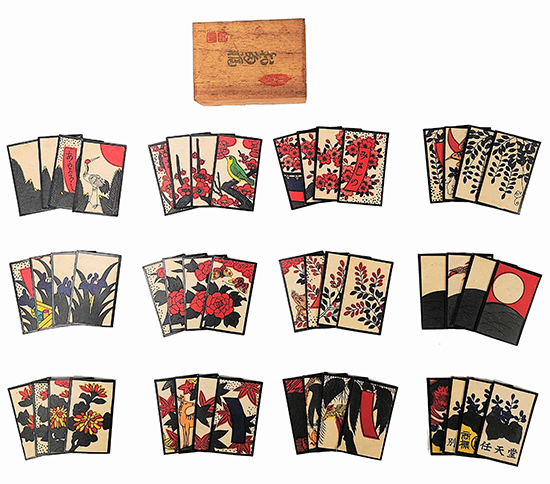Japanese Hanafuda Cards

These playing cards, called hanafuda, are from Japan. The Portuguese first introduced playing cards to Japan in the mid-16th century. However, European cards were banned along with many other foreign goods in 1633, leading to the development of unique Japanese cards. The cards went through many iterations and were frequently banned because of their connection to gambling and organized crime. Hanafuda cards as they exist now first appeared in the mid-1800s. In 1889, the Nintendo Company formed specifically to manufacture hand-printed hanafuda cards. This Nintendo deck is from the early 20th century.
Hanafuda translates to “flower cards.” The deck of 48 cards is divided into twelve suits of four cards each. Each suit represents a month of the year and has an image of a flower or plant connected to that month. The flowers are as follows: pine (January), plum blossoms (February), cherry blossoms (March), wisteria (April), iris (May), peony (June), bush clover (July), silver grass (August), chrysanthemum (September), maple leaves (October), willow (November), and paulownia (December). The cards are much smaller than Western cards at only a little more than two inches long, but they are significantly thicker.
The cards can be used to play a variety of games with a wide range of complexity. Because the cards are unmarked aside from the flower designs, many of the games rely on the players ability to memorize the point values assigned to specific cards. Simpler games involve matching the cards in your hand to those on the table to make sets called yuka. Outside of Japan, hanafuda cards can be found in several Pacific island nations, Hawaii, and Korea, although the rules of the games may vary from place to place.

